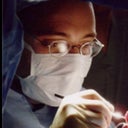Posted underEar Surgery q&a
What is the recovery time for an otoplasty? When will it be completely healed?
What was your recovery time after an otoplasty? How long did it take to heal from the ear surgery?
Answers (51)
From board-certified doctors and trusted medical professionals

Dr. Catherine Weng, MD
Facial Plastic Surgeon, Board Certified in Otolaryngology – Head and Neck Surgery
Answer
More Ear Surgery Questions
See all Ear Surgery Q&AWE SEND PRETTY
EMAILS
What’s trending? Who’s turning heads? Which TikTok myths need busting? We’ve got you. No fluff, no gatekeeping—just real talk. Get our free, unfiltered newsletter.









